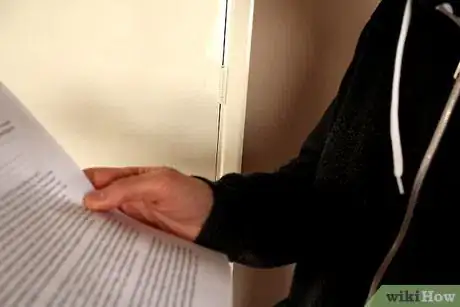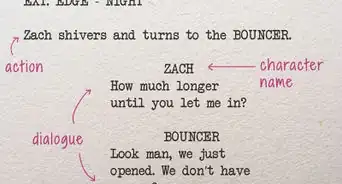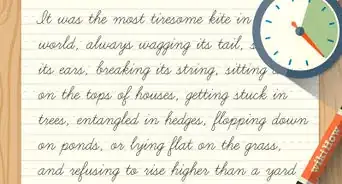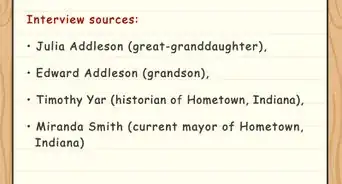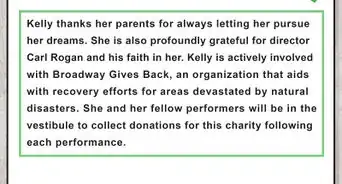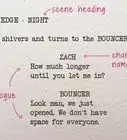wikiHow is a “wiki,” similar to Wikipedia, which means that many of our articles are co-written by multiple authors. To create this article, 22 people, some anonymous, worked to edit and improve it over time.
wikiHow marks an article as reader-approved once it receives enough positive feedback. In this case, 89% of readers who voted found the article helpful, earning it our reader-approved status.
This article has been viewed 178,776 times.
Learn more...
Radio still captivates many listeners around the world and is a great medium for a play. Many years ago, listening to the radio was the main source of entertainment until television came along. While we have a wide array of entertainment available to us nowadays, not everybody wants to watch TV; some prefer to listen to the radio while they work or do chores. This article provides some brief details on writing a radio play, now an old art but a good one.
Steps
-
1Create a visual picture. Writing for radio requires you to paint a picture in the audience's mind. This means the use of descriptive words to build up images that enable the listening audience to identify with the characters, the world the characters live in and the atmosphere for each scene. Use of color is very important to create the image in the listener's mind; for example, have the characters mention such things as "the vast blue sky", "the shimmering red evening gown", "the bright yellow VW", "the luminous orange iPod", etc.[1]
-
2Use the narrator device. A narrator is very useful in the context of radio:
- The narrator can lay out the scene, explain action sequences and wrap up the scene.
- If you are writing a radio serial, the narrator can summarize the previous episode's action.
- The narrator can switch between scenes: "And meanwhile, back at Joey's pad, the dogs had eaten all the party food...."
Advertisement -
3Create action through dialogue. Since all you have to work with is dialogue rather than props, a setting, or visual cues, your dialogue will need to work hard. It can be used to describe action as it is taking place: for example, "Oh look! Jenny's car is rolling through the fence of that field and into a ditch. And George is running after it as fast as he can! Should we help?" Use verbs to paint your active scene and be as descriptive as it is possible to be in a conversation or discussion to describe the scene occurring around the action.[2]
-
4Make the most of sound effects. Sound effects are the radio playwright's best friend and also the entertaining part. Work in sound effects to bring the play to life. Consider such sound effects:[3]
- Doors - opening and shutting them creates options for bangs, squeaks and knocking; doors in the wind create the opportunity for a relentless soft banging or a creaking etc.
- Street sounds - children's cries, school bells, scooter zooms, freeway traffic, street vendor's cries etc.
- Kitchen objects - a kettle whistling, a toaster popping up, knife scraping butter into toast, lids of jam jars being popped open etc.
- Astounding noises - things to wake up your audience such as an explosion, a car crashing, an angry mob shouting etc.
-
5Use Mixer effects. You can use effects which are built into the mixing desk to help create actualization. When it comes to producing your play, and if you are producing it, be sure that you do a sound check with the effects, to ensure the sound levels and effects are how you want them:
- Panning - Use to portray the position of specific sounds, or to portray movement. This can be achieved by moving the Pan control into the desired position you want the sound.
- Reverb - Use this to set the acoustics of a location. For example, empty rooms, caves, halls and basketball courts to name a few.
-
6Include music. Music in the background can help to set the mood of your play. Obviously, you can match music to feelings, such as sad music for sad occasions featuring death or loss; happy music for good news; suspenseful music for a scary or worrying moment and fast music for increased action or a chase. Music also sets the opening and closing tone of a radio play, serving as the aural curtain for your play.[4]
-
7Create believable characters. As with any play writing, you need characters who are believable. Yet, radio allows you some leeway; you may write quite a number of characters into your play but when it is produced, the actors may be able to change their voices to cover quite a few of the characters without needing a large cast. Therefore, do not feel hemmed in by worrying about the lack of recording space![5]
-
8Be precise and clear with your language. Everything must be clear in the language because your listener cannot view a character using facial expressions, waving arms about or throwing objects etc. Silence must be used carefully so as not to convey an empty space; silence cannot be used for great effect on the radio as it makes listeners think the power has gone off. Use it sparingly.
Community Q&A
-
QuestionCan I make a radio play on a Mac?
 Community AnswerGarageband lets you apply panning and reverb to tracks and has a wide variety of midi loops and sound effects. It comes as a default with Macs and is fairly intuitive to use.
Community AnswerGarageband lets you apply panning and reverb to tracks and has a wide variety of midi loops and sound effects. It comes as a default with Macs and is fairly intuitive to use. -
QuestionHow do I make a radio drama?
 Community AnswerUse different voices for different people. It is similar to writing a short story.
Community AnswerUse different voices for different people. It is similar to writing a short story. -
QuestionHow do I write a radio drama synopsis?
 Community AnswerUse as many buzzwords as possible to entice the viewer, while giving a general overview of what the story really is about.
Community AnswerUse as many buzzwords as possible to entice the viewer, while giving a general overview of what the story really is about.
Warnings
- When at the production stage of a radio play, don't use overwhelming music or sound effects. Allow the dialogue to be the centerpiece of your work.⧼thumbs_response⧽
- Make sure that music played is either free of current copyright, or that ASCAP/BMI fees are duly paid. This will require a license from ASCAP. But check further.⧼thumbs_response⧽
References
- ↑ https://artsonline.tki.org.nz/Teaching-and-Learning/Secondary-teaching-resources/Drama/Reviewed-resources/Key-Collection/Radio-Drama-Bow-Down-Shadrach/Writing-a-radio-play#Elements
- ↑ https://artsonline.tki.org.nz/Teaching-and-Learning/Secondary-teaching-resources/Drama/Reviewed-resources/Key-Collection/Radio-Drama-Bow-Down-Shadrach/Writing-a-radio-play#Dialogue
- ↑ https://www.bbc.co.uk/programmes/profiles/tnkQgSgPJVWM4ZpZ3hHbjv/ten-tips-for-writing-a-play-for-radio
- ↑ https://www.bbc.co.uk/programmes/profiles/tnkQgSgPJVWM4ZpZ3hHbjv/ten-tips-for-writing-a-play-for-radio
- ↑ https://artsonline.tki.org.nz/Teaching-and-Learning/Secondary-teaching-resources/Drama/Reviewed-resources/Key-Collection/Radio-Drama-Bow-Down-Shadrach/Writing-a-radio-play#Character

